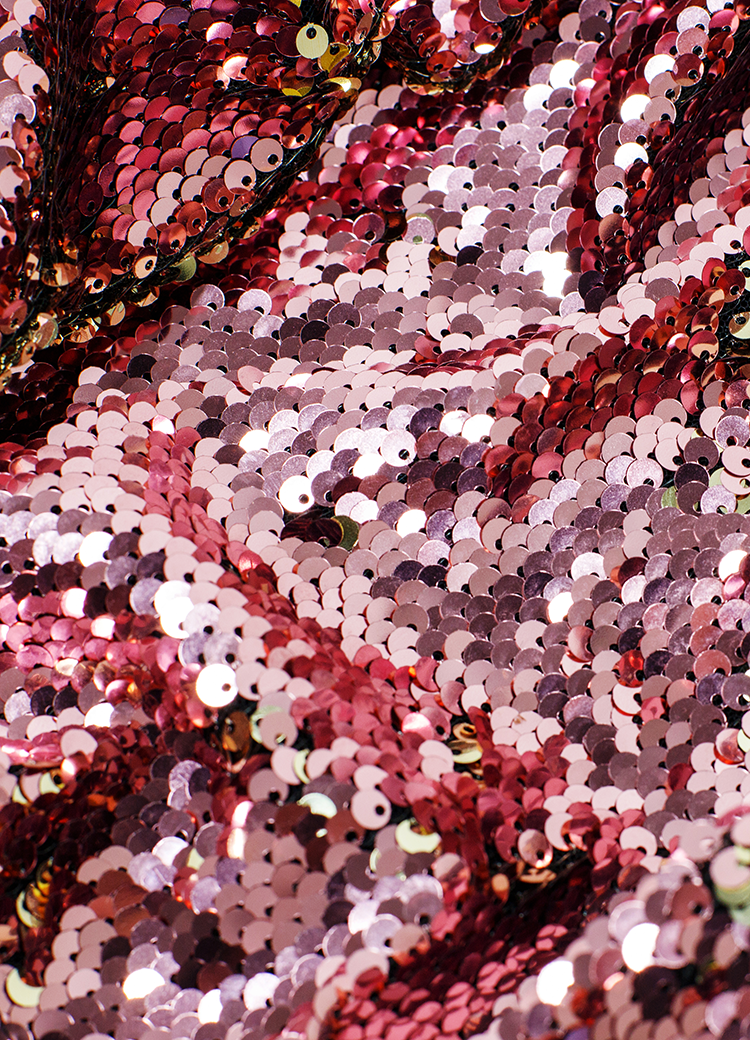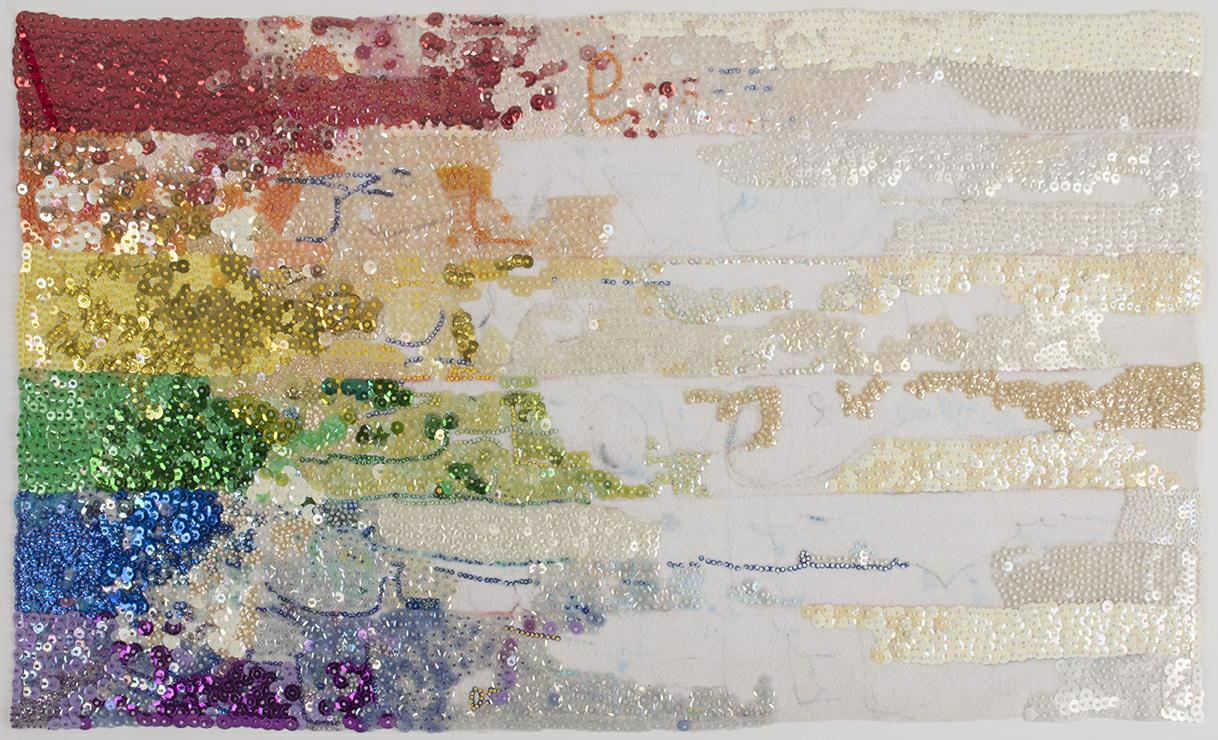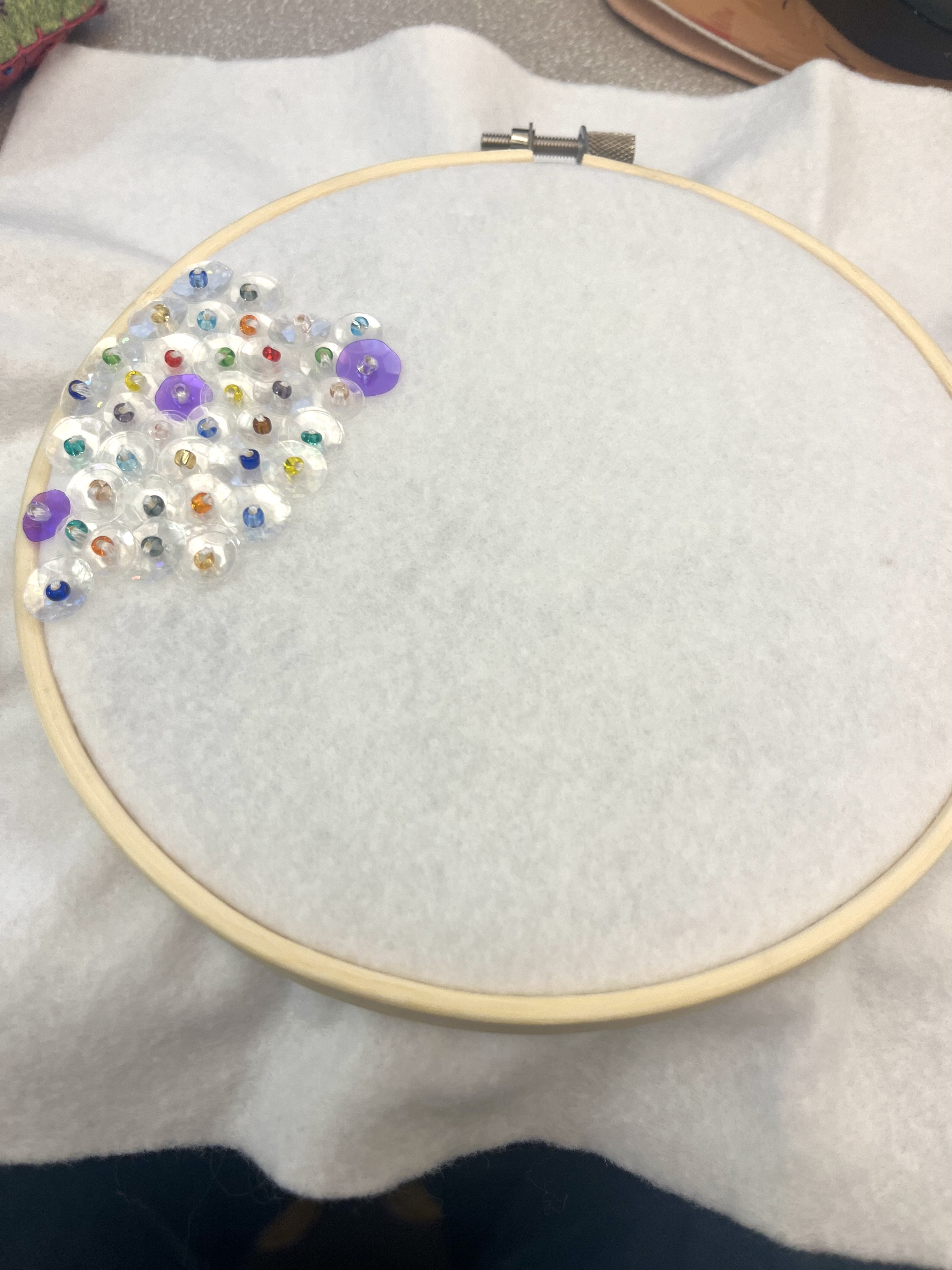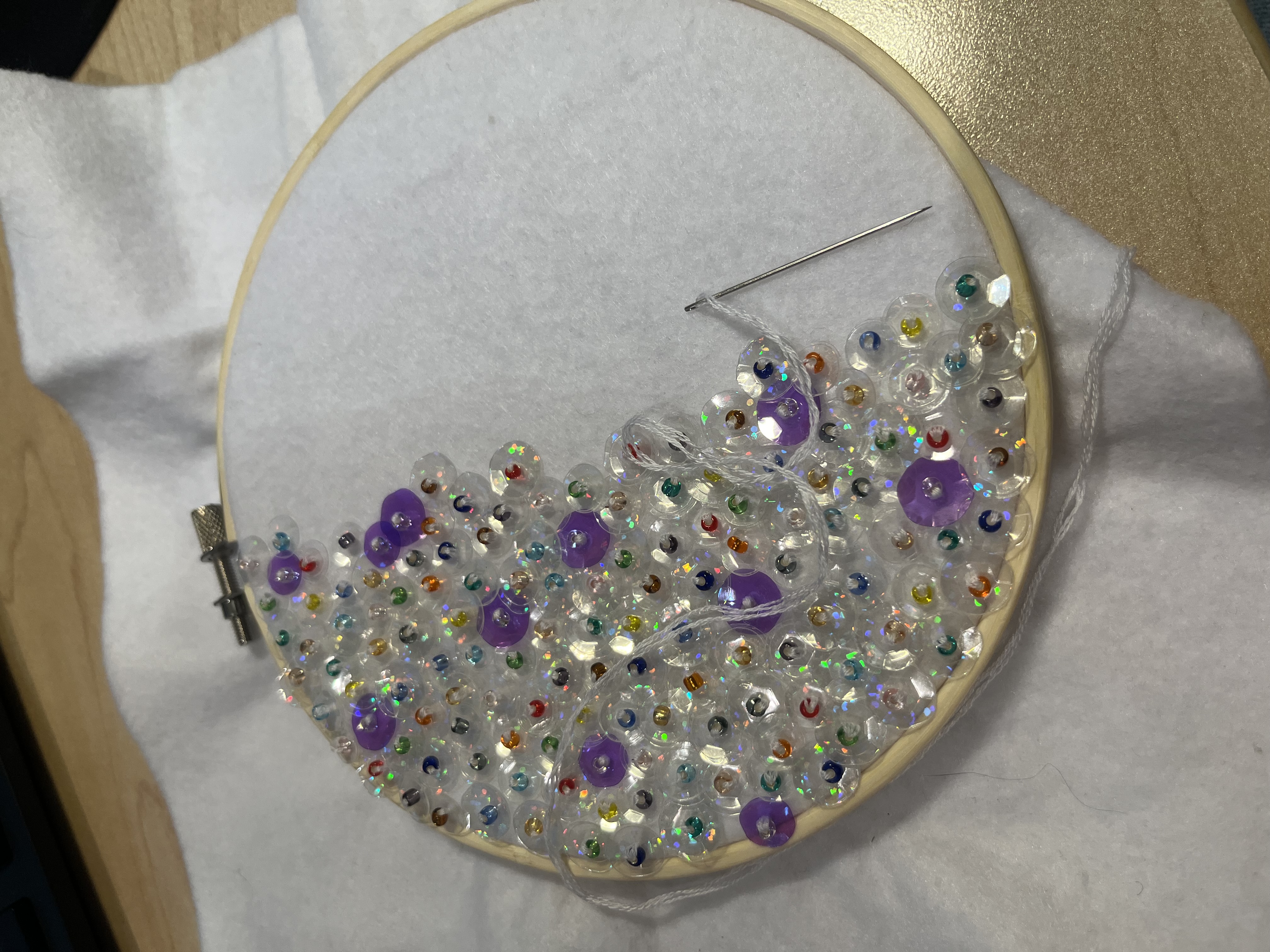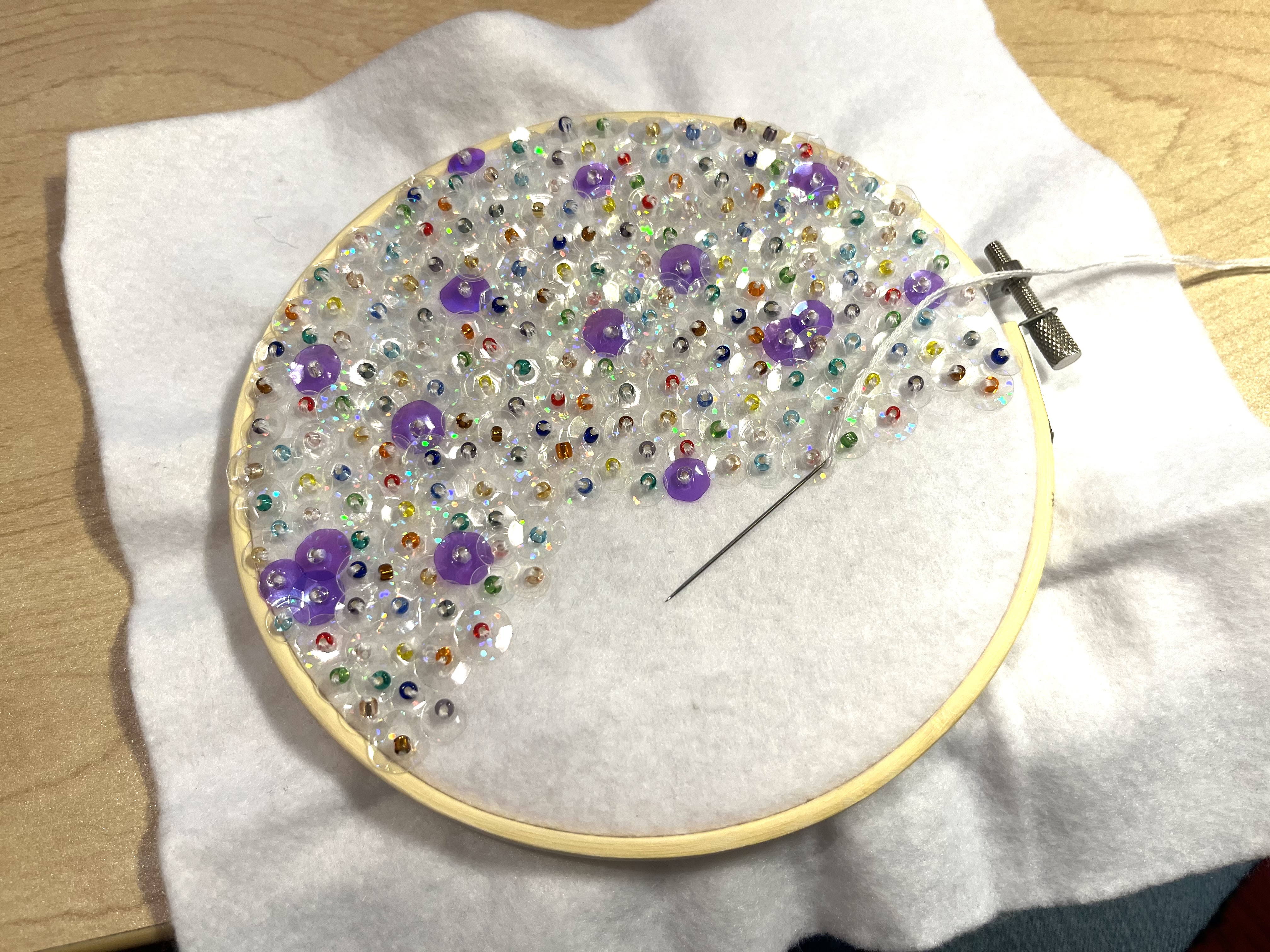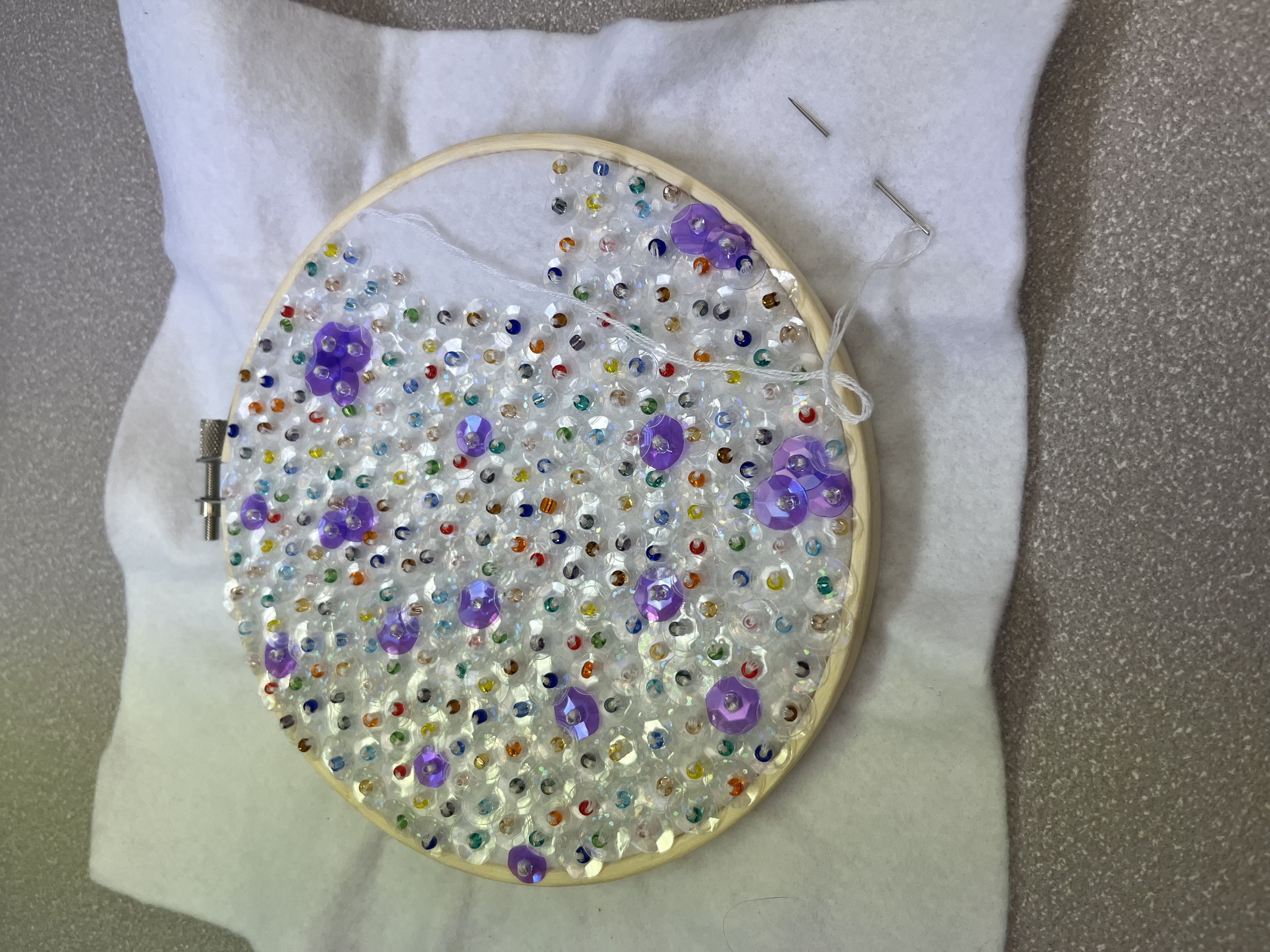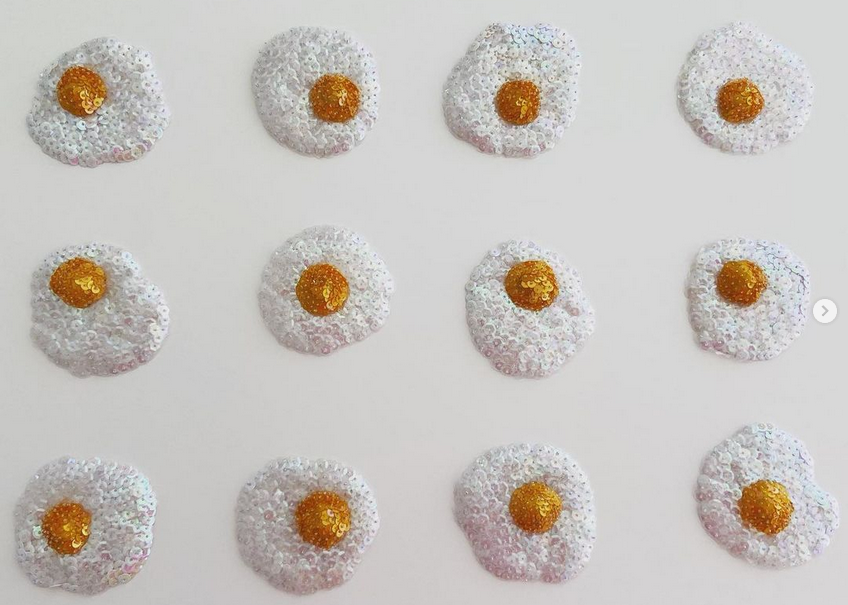Art Reproductions: Sequins, sequins everywhere
Introduction & Quick History
I recently interviewed Kristin Morland, a talented Lawrence artist known for her beadwork and sequin art. Morland's work has previously been shown in the library's Alice C. Sabatini Gallery and her piece, Glimmers of Hope, is one of my favorites in the library's collection. I find it mesmerizing with its array of colors and textures. She works with sequins and beads, hand sewing her pieces. I was motivated to try my hand at creating something similar.
Kristin Morland & Interview
Morland spoke passionately about her creative process and provided great insights into making art. Below my project, read my interview with Morland about her artistic process.
Creating a piece inspired by Morland
Creating a piece inspired by Morland
Supplies
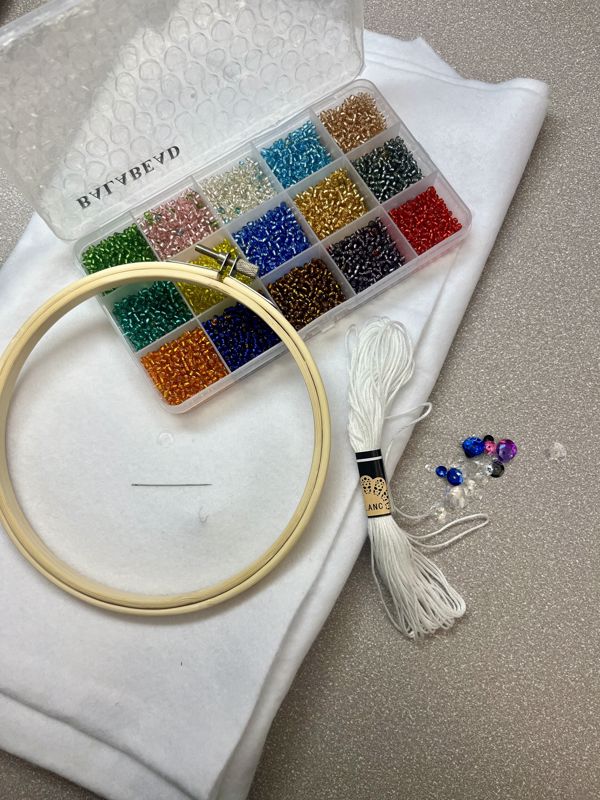 Felt: Any fabric will do, but Morland used felt in her work. Felt provides sturdiness and is affordable.
Felt: Any fabric will do, but Morland used felt in her work. Felt provides sturdiness and is affordable.- Beads: I used seed beads, but any small bead will get the job done.
- Thread: Embroidery floss works well for this project. It is durable and comes in every color of the rainbow.
- Sequins: So shiny! Choose sequins based on the look you want to achieve. I chose clear iridescent ones that complemented the various bead colors I used.
- Sewing needle: Select a needle that fits though the holes of your beads and sequins.
- Scissors: Essential for cutting fabric and thread to desired lengths.
- Embroidery hoop: Using an embroidery hoop makes the process easier and can double as an inexpensive frame for your completed work.
- Optional – Needle threader: This tool can be helpful if you struggle to thread a needle. It will make the process quicker and easier.
Project Steps
1. Prepare fabric: Cut your fabric slightly larger than your embroidery hoop. Place the fabric into the hoop, ensuring it is taut, but not overstretched, like a drum. This provides a stable base for your beadwork.
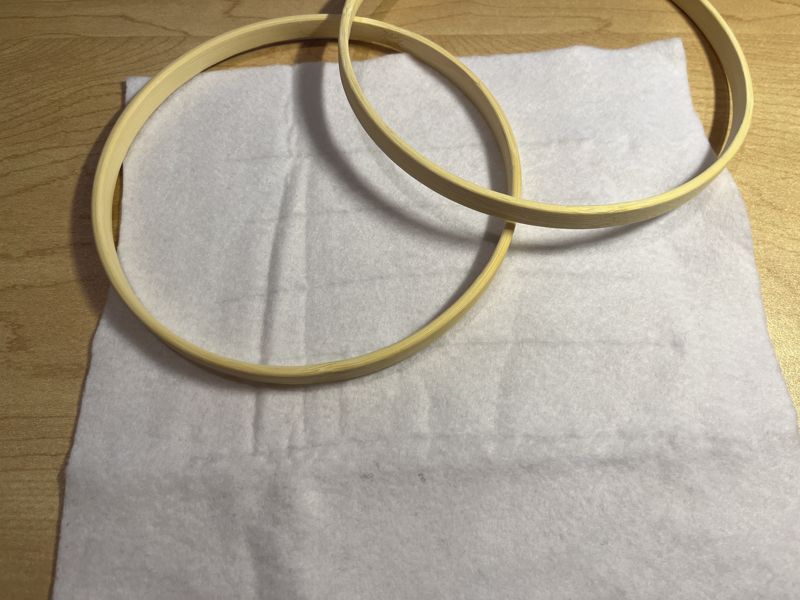
2. Thread your needle: If threading needles is challenging, use a needle threader. Pull the thread halfway through the needle and fold it so that the ends meet. Knotting the ends together can help hold it in place. The needle should hang from the center.
3. Start beading: Pull the threaded needle up through the fabric from the back. Place a sequin on the needle, followed by a bead. The bead should sit snuggly against the sequin.
4. Secure the sequin and bead: Insert the needle back through the hole in the sequin (but not through the bead) and the fabric, pulling the thread all the way through. The bead will hold the sequin in place.
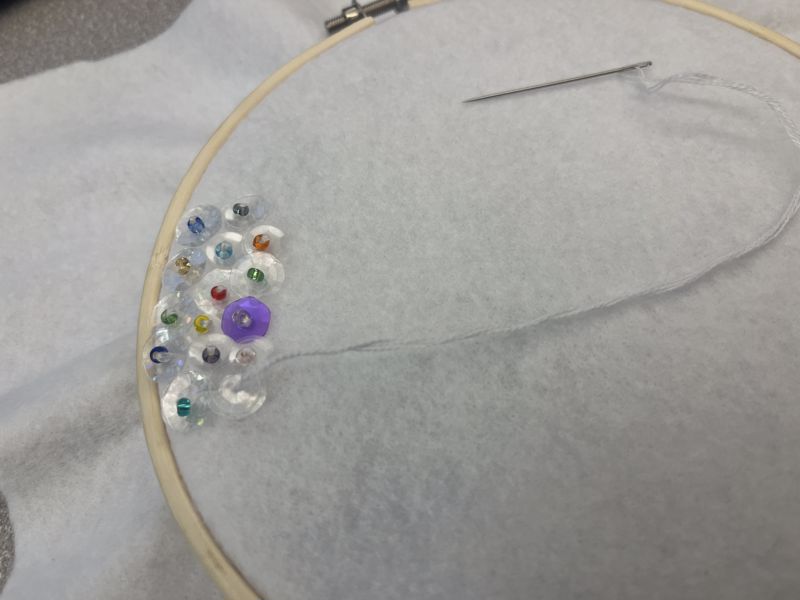
5. Repeat: Continue adding sequins and beads in this way until your entire piece is covered. Vary colors and patterns as desired for a unique look.
6. Finish: Once you’ve completed your design secure the thread at the back of the fabric with a knot. Trim any excess thread and fabric. Your artwork is now ready to display or frame in your embroidery hoop.
Conclusion
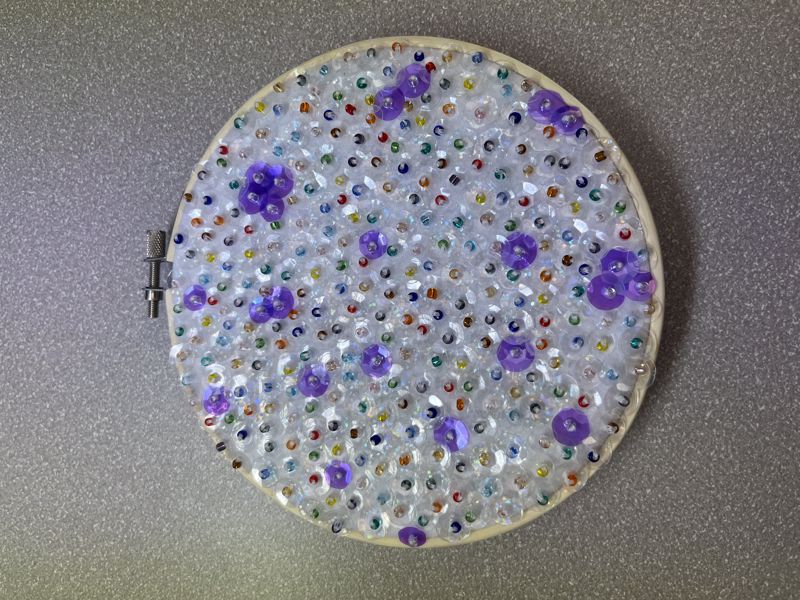
Overall, I found working on this project incredibly meditative. The repetitive nature of threading sequins and beads reminded me of cross-stitch, a craft I’ve always found calming. As I worked, I was completely absorbed in the process, the motion of the needle and thread was soothing. I was mesmerized by how the sequins and beads transformed the fabric, adding depth and texture to my piece. It was an immersive experience and I felt relaxed.
Interview with artist Krsitin Morland
Interview with artist Kristin Morland
Please describe your creative process. How do you typically approach a new piece or project?
I am a visual artist who works primarily with light, and that takes form with sequins and beads. I personally hand sew sequins and beads to create my work. The main impetus of my work is reflecting the stillness I observe and putting it into form. The process of creating my sequin works is a quiet rhythmic light meditation on the is-ness of life. Subject matter can begin with fleeting moments like observing a rainbow reflected in a puddle, snorkeling in the coral reefs of the Caribbean or joyful experiences with my family. The play of light and observation in these moments all join together in the creative process. Observing a moment in the ever-changing light on a subject is what I aim to reflect in my work. I seek to understand our world most fully through the tools of my education, experience and exploration. Patterns of behavior, natural forms, sound and space collaborate to form identities. Within these identities come perceptions, associations and conclusions. Organizing and filtering these observations becomes the basis of my work.
How did you get into art?
As a child I loved to draw and make things. My high school art teacher took an interest in me and very much encouraged me to follow this path.
What is your favorite medium?
Two favorites: sewn sequins & beads and paint.
What inspires you?
I’m inspired by the natural world, my dogs and cats, the clouds in the sky, and people.
Are there any themes or ideas that consistently appear in your work?
Light and color…. The way that light can change perception of a subject. Water and sky are often part of my work.
Who are your biggest artistic influences?
Georgia O’Keefe, Cy Twombly, Willem de Kooning
How did you develop your skills?
My daily studio practice, I have been working with this medium of hand sewn sequins and beads for over 20 years now and before that I went to KU for painting and weaving.
How do you define success as an artist?
Having time to fully give to a project and to see it through. Working daily in my studio.
Describe how art is important to society.
I think an artist develops their own language through their experiences and perceptions of the world; art communicates, asks questions and can sometimes be a mirror to society itself.
What advice would you give to aspiring artists based on your own experiences and learning?
Keep a daily practice whether it be drawing or painting or any kind of making, there is so much to explore.
Final thoughts
Final thoughts
My interview with Kristin Morland and the experience of creating my own bead and sequin art was incredibly inspiring and rewarding. Kristin’s passion for her work and attention to detail left an impression on my own craft and motivated me to explore new artistic ideas. The process of working with sequins and beads isn’t just creative, it’s also meditative and reminded me of the joy found in simple repetitive tasks. I look forward to continuing to use these techniques and ideas in my future work.












